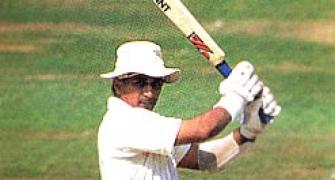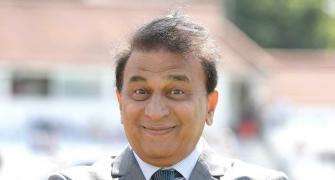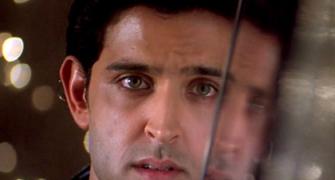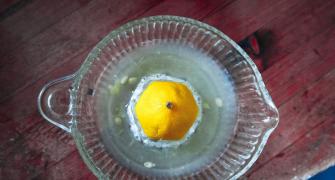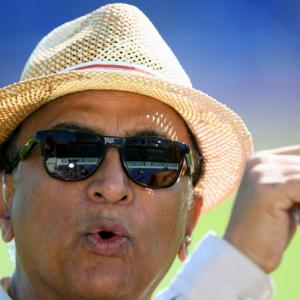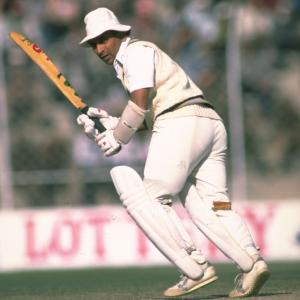To watch Dada standing on the steps of the airplane ladder with a glittering trophy in hand was exhilarating, recalls Hemant Kenkre.
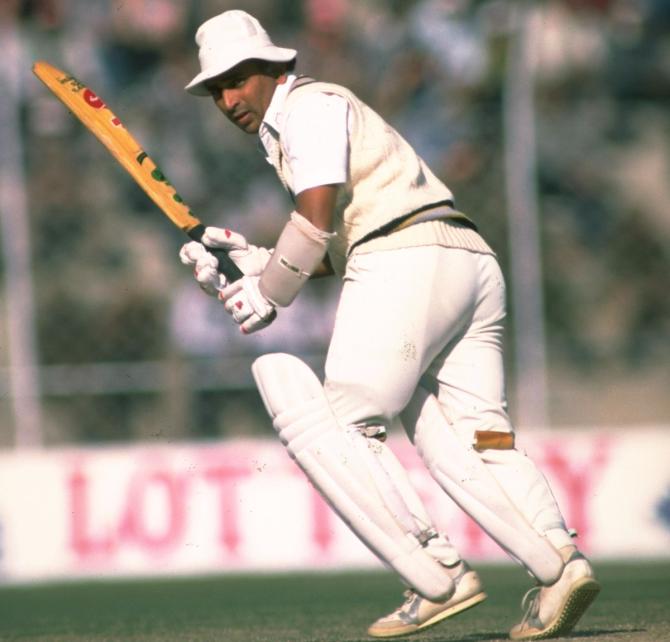
While growing up in the middle-class area of Tardeo, Bombay (south Mumbai), the place which I loved visiting was situated about a kilometre from where I lived.
As a baby, my mother (a medical doctor) used to drop me off into the loving care of my Mami (maternal aunt) Minal Gavaskar who lived on the top floor of Bhagirathi Bai building, a quaint block of four two-storied houses in the middle of which was an open area paved with compacted mud.
The visits to Mama (maternal uncle) Manohar Gavaskar, my mother's elder brother, and Mami became a welcome haven for a boy growing up alone as the Mater went to her dispensary to practice medicine.
Apart from delicious food and Marathi sugam-sangeet (light classical) songs sung by my affectionate aunt, the highlight of the trips was browsing through a brown, glass-covered, wooden cabinet full of magazines.
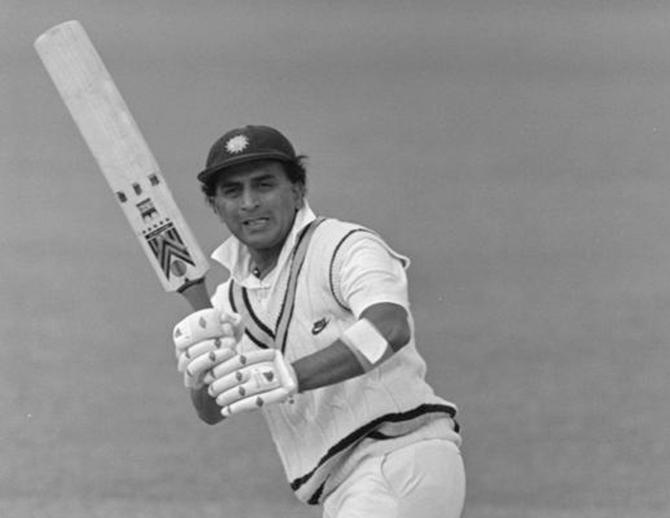
The cupboard had a trove of them, the majority of which were collected by my eldest cousin and the subject of this essay, my hero -- Sunil Manohar Gavaskar.
Needless to say, Dada, as I have always called him, showed a distinct preference for sports periodicals.
Those acquainted me with names from Bradman and Merchant to Sobers, Kanhai, and many more cavalier cricketers.
Listening to stories recounted by my Mama, and his cousins who resided there, weaned me on their (and my) favourite game, cricket.
Dada was essentially my hero simply because he played cricket and everyone called him a prodigy.
To watch him leave for a match with a small kitbag and a bat in hand or see him standing in the veranda taking the muddy dirt out of his spiked shoes was aspirational for me, whose ambitions were to be like him.
And when my father used to show me his picture (usually with a raised bat) in the morning newspaper, the sense of pride just kept swelling.
As time went by, the columns on his exploits started to get bigger and the frequency of his picture appearing in major newspapers began to increase.
When Mama's family moved to distant Dadar, my loyalties shifted from Tardeo to 40-A, Sir Bhalchandra Road, Dadar East.
Just like I used to do at Tardeo, a key task he always gave me was to bowl throwdowns with a 'season' ball.
Something I absolutely enjoyed in spite of ending with a sore shoulder after each half-hour session.
Earlier, my throwdowns were done while standing on the steps of the passage outside his old flat.
At Dadar, they were affected while at the end of a special mat placed indoors in a long passage that separated the living room from his parents' and siblings' bedrooms.
At both venues, the ragged orb of leather always came straight back, saving me the inconvenience of fetching the ball from distant corners. No flicks, no cuts, only straight drives.
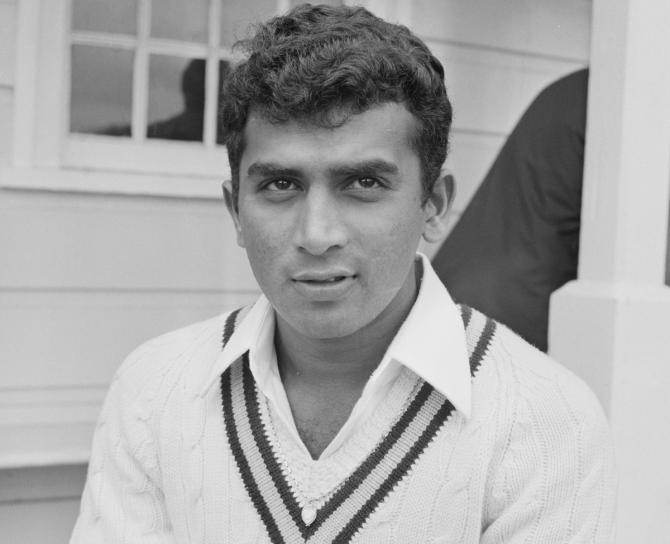
Many years later, when people raved about that particular shot, a small part in me always felt proud to play an itsy-bitsy, teenie-weenie part.
I must be one of the fortunate few who were privileged to see Sunil from playing Sunday fest (tennis ball) cricket in his home compound to his exploits for the country with university, club, and state cricket in-between.
Milind Rege, his bestie and my cricketing mentor, always reminds us of the number of shots he used to play all around the wicket, an attribute he used sparingly while holding the flag for India.
What separated Dada from his peers, in Milind's (who went on to lead Bombay and serve the city's cricket) opinion, was the burning ambition he had and his ability to focus completely on the present situation.
One got many occasions to listen to his peers, seniors and heroes speak about him. Not just about his cricket but the way he approached the game.
While working (as a public relations consultant) on the India-England series of 1993, I was in the august company of M L Jaisimha, who was the brand ambassador of the sponsor.
Among many stories that Uncle Jai told while touring across the country, was the way Dada evolved during the famed 1971 tour of the West Indies.
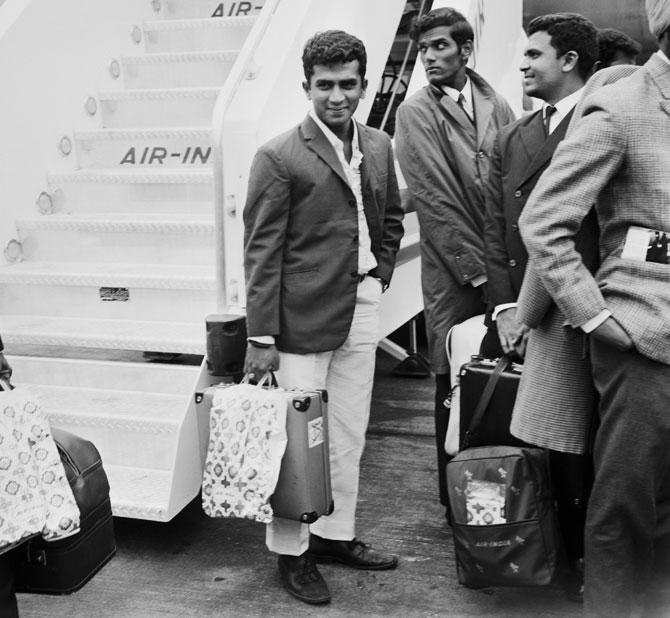
His work ethic and attitude were described in detail by the stylist from Hyderabad who said he realised he was in the company of a future great the way he approached the last Test at Port of Spain in Trinidad.
'To bat with a painful tooth and ensure the Test was drawn was a superhuman effort,' said Dada's childhood hero.
For one who was in awe of him since childhood, it was an amazing feeling to stand amid the multitude that welcomed Ajit Wadekar's victorious team as they landed at Santa Cruz airport in the late hours of a hot April night in 1971.
To watch Dada standing on the steps of the airplane ladder with a glittering trophy in hand was exhilarating.
My 'that's my brother' cries were lost in the deafening din that would have drowned the blast of a jet plane.
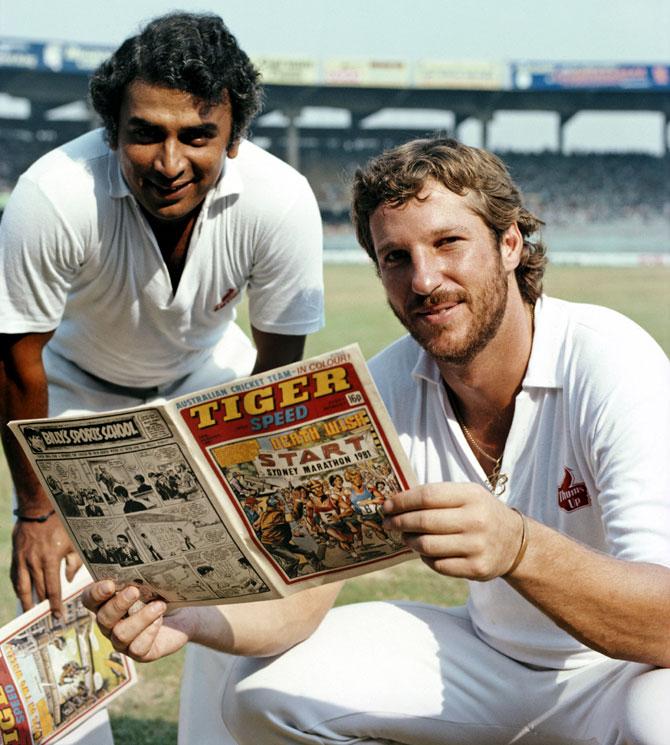
From 1971 to date, I've had many encounters with Dada's fans, peers, and seniors.
While on a social tour with the Cricket Club of India team to Australia in 1982, a pleasant surprise awaited me as the team checked in for a flight to Adelaide at Melbourne airport.
Putting his bags on the check-in counter was Sir Garfield Sobers, who was also on our flight.
When introduced as Sunny's cousin by (the late) Kiran Ashar, his Bombay teammate Sir Garry asked me to sit next to him during the short journey.
The next hour-and-a-half were full of questions posed to one of cricket's greatest all-rounders.
Sir Gary enquired about the well-being of many from the Indian team that had beaten his side on the historic tour with particular reference to Dada and Gundappa 'Vishy' Viswanath.
The Indian team, at that time, was locked in a Test series against Keith Fletcher's English side and Vishy had scored his first Test double hundred at Madras (Chennai).
The team had come back after a drawn series against Australia where Dada had a dismal average in the three-Test matches.
The legendary all-rounder wanted to know how Dada was doing, saying: 'He will leave behind what happened on the Australian tour and come back very strong.'
Finishing the series with 500 runs from six Tests was a great return to form for Dada who had worked very hard before the England team touched Indian shores, playing even Saturday afternoon practice matches and local tournaments for his club and employers.
'His grammar is impeccable and it is just a matter of time for him to find his form and rhythm,' Sir Gary had foretold.
As we said goodbye to the genial legend on reaching Adelaide, he asked me a question concerning Dada.
'Why does he wear that (guard) on his arm?>' he queried (pointing to his own forearm) while referring to the armguard Dada had started wearing.
'Tell him that he does not need it. He's too good to wear that (guard).'
Once back from Down Under, I conveyed Sir Gary's message about the arm guard to Dada when we were driving back together after a match.
'Oh, did he say that?' replied Dada, adding: 'It's ok for him to say that. He never even wore a thigh pad when he played against the fastest of bowlers.'
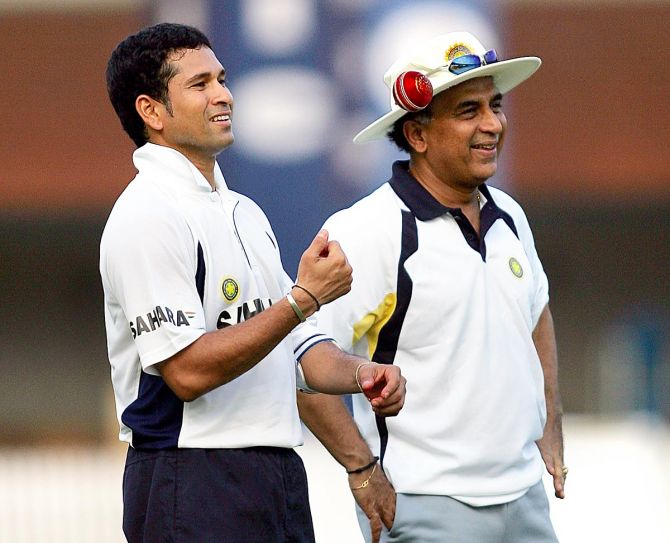
A hero is one who inspires and, to me, Dada has been a constant inspiration, even after he hung up his boots.
As a club cricketer who played at a decent level, I always looked at Dada as a role model when it came to playing the game in the spirit it is meant to be played.
When I stopped playing serious cricket, I took to writing and commenting on the game, literally following in his footsteps.
When I worked with top-notch brands in the communications sphere, the discipline that Dada always showed while working rubbed off on me.
Even when he was at the top of his game and career, Dada never missed a day in the office.
A lesser-known attribute of Dada is his sense of loyalty and the camaraderie he still shares with his close friends.
His son Rohan once told us a story of how Dada refused to buy a brand as it competed with another one that he had endorsed more than two decades ago.
Throughout his career, Dada stuck to his club Dadar Union (barring a few years as a playing member for the CCI, considered a prestige then) telling the management to call him whenever the club fell short of players till a few years after he had retired.
Each year, Dada hosts a party inviting a few close friends and many cricketers with whom he has shared a dressing room from his school days and onwards.
The soiree attracts well-known names from the world of cricket and a few 'A-listers from the world of entertainment.
More than his interactions with well-known names, I always find his conversations with his old mates from Bhagirathi Bai Buildings very fascinating.
Huddled in a group, they discuss memories. With them, Dada goes back to becoming a schoolboy once again, recollecting (among other things) the tennis ball matches that they had played in the era of the '60s.
For that short moment of time, the legendary opener gets transported back in time while laughing, cracking jokes, and leg-pulling, exactly how it must have happened in the mud-paved compound of their old homes many decades ago.
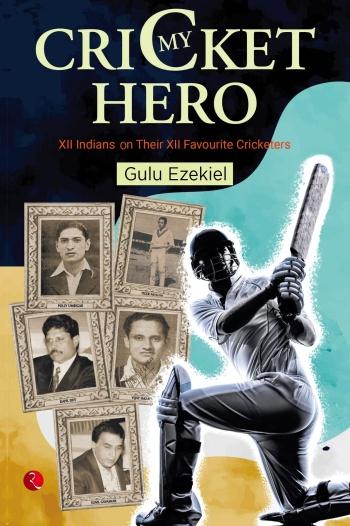
Dada's legion of fans goes across continents.
He single handedly changed the way Indian cricket and cricketers were perceived not just on the field but off it too.
He has had his detractors and has handled them in a way only he could, with a certain dignity and loads of class.
As a die-hard fan, it feels great when people speak in glowing terms about your hero and his phenomenal exploits that raised the value of Indian cricket on foreign shores.
While on a music tour to the Caribbean in 1985, I had a delightful encounter with a band of cricket lovers in Trinidad.
I kept badgering our host to take me to the Queen's Park Oval where India had established their first Test series victory against the West Indies.
Driving me down to Savannah, where the iconic cricket stadium was located, my host ushered me into the ground where my hero had made his Test debut as a 21 year old.
As I soaked in the atmosphere, imagining what must have taken place more than a decade-and-a -half ago, we came across a long bar which overlooked the green expanse of the cricket field.
Sitting at the bar were an enthusiastic lot of members discussing cricket while sipping their poison to beat the afternoon heat.
The hot topic of the day -- is Vivian Richards better than Rohan Kanhai? -- was interrupted when my host introduced me, saying I was a cricketer from Bombay who was related to Sunil Gavaskar.
To my amazement, the heated comparisons between the current and past West Indian masters ended abruptly.
My new bar friends (one of them being former West Indies international Joey Carew) rose up in unison, put their glasses up in the air in salute, saying: 'Cheers to the Maastah!'
Excerpted from My Cricket Hero: XII Indians On Their XII Favourite Cricketers by Gulu Ezekiel
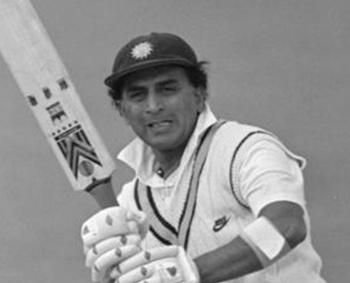
Feature Presentation: Rajesh Alva/Rediff.com

